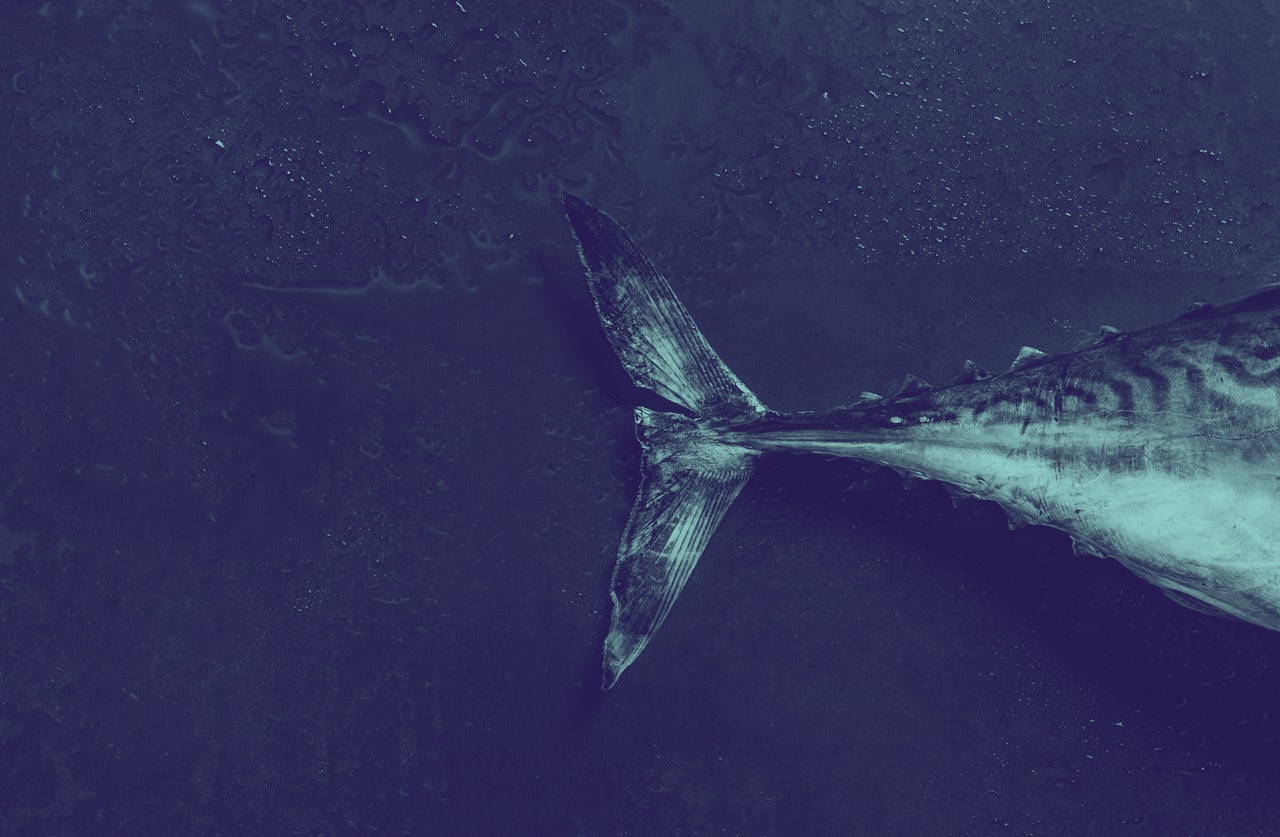Canned tuna is so mired in controversy that it’s a wonder anyone can justify eating it. Brands such as Bumble Bee, Chicken of the Sea, and StarKist espouse themselves to be “dolphin-safe” in the face of lawsuits alleging that they’re anything but. Earlier this year, meanwhile, one human rights group found that canned tuna brands often don’t even know who catches their tuna, “putting workers in the industry at risk of exploitation and slavery.” The industry’s demand for certain types of tuna encourages levels of overfishing that threaten to throw the entire aquatic ecosystem out of balance. For the sake of the planet, the canned tuna industry needs a makeover.
“The oceans are in a pretty bad state. Tuna are in red and yellow stock status,” Douglas Hines, CEO of Atlantic Natural Foods, told me in an interview. “We’re not going to have any fish left. We need an alternative source of protein.” Atlantic Natural Foods owns a suite of plant-based food brands, including one, Loma Linda, which got its start as the in-house bakery of an early 1900s Adventist sanitarium. Loma’s newest offering is TUNO, a tunaless tuna product, which, along with its competitors Good Catch and Vegan Toona, hopes to serve as a fishy analog to the meatless sensation that is the Impossible Burger.
Despite Hines’s claim that TUNO will safeguard vulnerable tuna species, it's ambiguous as to whether a plant-based canned tuna alternative is a viable solution to overfishing. Matthew G. Burgess, an assistant professor of Environmental Studies at the University of Colorado Boulder, studies overfishing and its consequences. He’s not convinced that buying fishless tuna would do anything to help the ocean’s endangered species. “Most canned tuna is made from skipjack tuna, which is not being overfished,” Burgess wrote to me in an email. He added, “So, even an effective substitute for canned tuna is unlikely to take much pressure off species like the bluefin tunas and bigeye tunas which are being overfished.”
Demand is highest for wild-caught, fresh tuna, Burgess explained, and an imposter tuna will likely never take its place, even a farmed one. “Bluefin tunas are consumed partly as luxury products, which places authenticity at more of a premium,” Burgess said. “A few years ago I advised an undergraduate research project where the student found little evidence for market substitutability between wild-caught bluefin tuna and farmed (but still real) bluefin tuna. I would strongly hypothesize plant-based substitutes to be even less effective at reducing demand.”
TUNO and similar products could safeguard skipjack stocks in the long term, if skipjack ever does become endangered (though it’s worth noting that its conservation status is currently categorized as “least concern” compared to other species of the fish). However, according to Burgess, plant-based tuna substitutes could have one incidental, though essential, impact on the environment. “Some skipjack tuna fisheries catch things like dolphins, marlins, and other more vulnerable tuna species by mistake in their nets,” Burgess said. “So, if TUNO reduced demand for skipjack tuna, and reduced the size of those fisheries as a result, it could take some pressure off of these bycatch species.”
The bycatch problem could go away on its own, though: The Department of Agriculture recently reported that canned tuna consumption has dropped 42 percent in the last 16 years.
Even if canned tuna were still popular enough to warrant a replacement, the current iterations are more expensive and less nutritious than real fish. A three-ounce can of Starkist contains 16 grams of protein and costs 99 cents at Target, compared to the seven grams of protein in a $2 can of TUNO. (Both contain healthy Omega-3 fatty acids, which TUNO pulls from seaweed.) Other brands are even more expensive: Vegan Toona is nearly $4 per can, while Good Catch will cost you $5 for a pouch.
Hines himself admits that canned tuna is going out of style, and claimed that TUNO isn’t supposed to be a “one-to-one replacement.” Rather, he said, it should be considered a general “supplement to the world’s protein supply.”
I am ashamed to admit that we eat a lot of canned tuna in my house, mostly in tuna salad form. After I interviewed Hines, I decided to try TUNO in the hopes that I could still enjoy the taste of canned tuna minus the guilt over the potential ecological havoc it wreaks on the way to my pantry.
The first thing that hit me after I ripped open a container of lemon pepper TUNO was the smell. You’ve got to hand it to TUNO: the stuff absolutely nails the pungent, sour, cat-food-y essence actual tuna. Unfortunately, I mean that in a bad way. I found the odor to be a difficult hurdle to overcome before I spooned a few chunks into my mouth straight from pouch. I didn’t entirely hate the way it tasted, though. It reminds me of unseasoned seitan.
There are, however, a few insurmountable issues with the flavor and texture: Real tuna is rich, tangy, and tender from soaking in oil. TUNO, on the other hand, is dry and rubbery. Real canned tuna is shredded, too, making it the right consistency for salads and sandwiches. TUNO is chunky and dense; the overall effect is of eating protein-fortified cardboard. Which leads me to my fundamental issue with plant-based tuna alternatives, which is that I would rather give up real canned tuna (and fish altogether) if it meant protecting the environment, rather than replace it with a product like TUNO. I suspect most people feel the same way.
Even if the tenets of plant-based canned tuna alternatives seem basically good, the logic behind this product doesn’t hold up. As long as commercial fisheries adopt sustainable fishing practices, the future of seafood is still real seafood. If they don’t, wild tuna may disappear. But as of now, it’s a lot easier to imagine a future in which we save the oceans by eating no tuna at all, rather than tons of TUNO.
